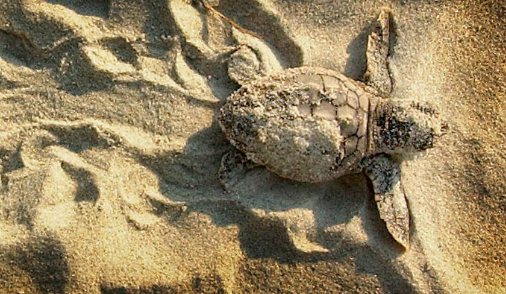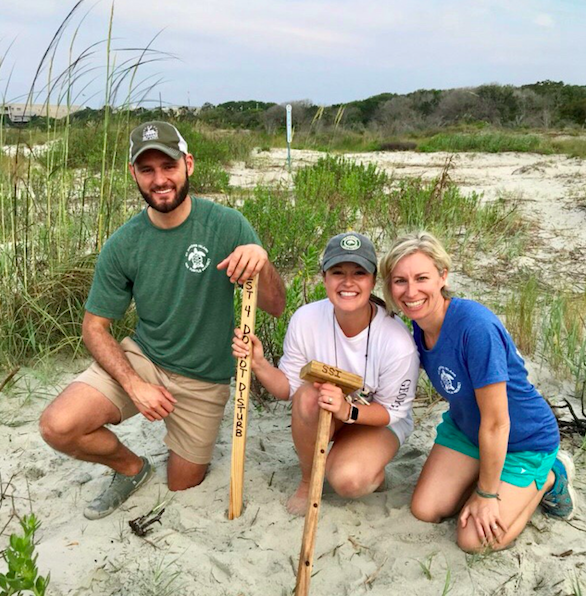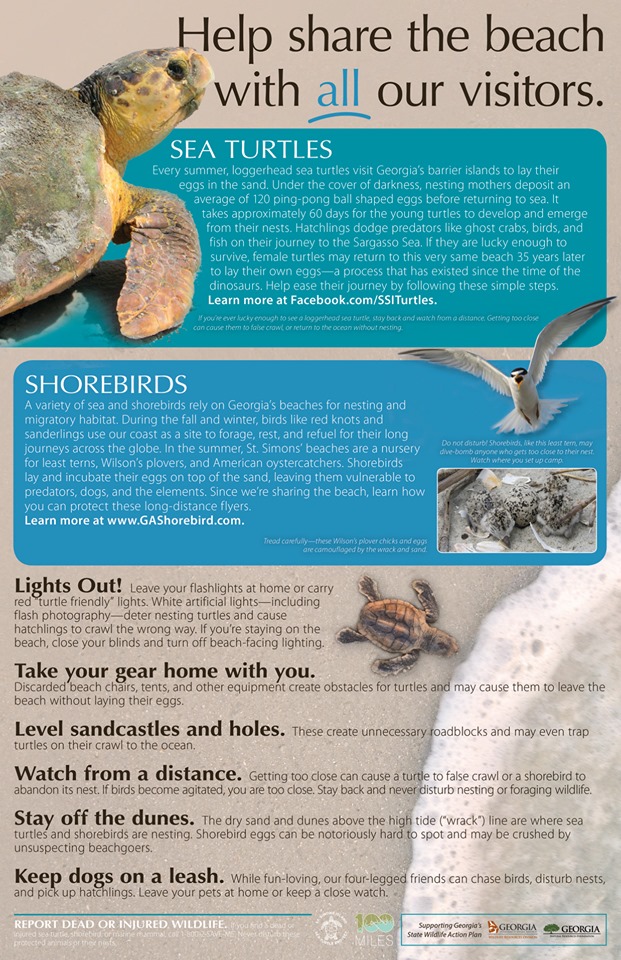
Photo: St. Simons Island Sea Turtle Project Facebook Page
By Maggie Johnston and Monica Medina
It is the middle of sea turtle nesting season along the Georgia coast, which typically occurs between May and September, and The New York Times reports that researchers there are crossing their fingers, hoping for a banner year. According to the Georgia Department of Natural Resources (DNR), which has an active sea turtle monitoring program, nesting season started early.
- The first nest was laid on Cumberland Island, Georgia, on April 26th, and the current count as of June 24th was 2,529 nests so far! This number has already beaten the number of nests counted last year (1,742), and the region’s beloved sea turtles could even exceed the record, which was 3,291 in 2016.
Why This Matters: Sea Turtle conservation efforts have come a long way in the last 40 years. In 1978, when the government designated Loggerhead Sea Turtle as a “threatened” species because of declining nest trends at some of the few surveyed beaches, including Cumberland Island, Georgia, little baseline survey data existed, in stark contrast with today. Thanks to decades of work by state departments of natural resources, like the Georgia DNR, working with researchers and communities, the future is looking brighter for these beloved creatures. Another important factor has been the use of special nets by shrimp fishermen that allow the turtles to swim out and not get caught. Loggerhead turtles weigh about 200 pounds and take 30 years to reach adulthood. Now Georgia scientists are able to document how many of the hatchlings saved in early conservation efforts are returning to Georgia’s beaches to lay their nests! There’s no doubt that the collaborative efforts have been effective. It is a great reminder that even if we can’t see environmental improvement immediately, that doesn’t mean it isn’t happening!
Turtle Conservation Runs on Volunteers: Georgia’s barrier islands are usually patrolled at dawn by government employees, but some islands, like St. Simons Island, are patrolled by trained volunteers. Some of those SSI volunteers work with our partner organization, the St. Simons Land Trust!”
- They check for new nests and make sure old nests have remained safe overnight. They mark off the new nests they find and move the new nests that are located too close to the water.
- They also remove one egg from each nest, which usually contain 100-120 eggs, for genetic sampling. This way, they are able to have a comprehensive database for keeping track of nesting mothers without having to use trackers.
Sea Turtles Lay Their Eggs at Night. If you are visiting a beach in the South Atlantic U.S. (from Florida to North Carolina), here are some tips for not disturbing turtle nests. Avoid using flashlights or camera flashes on beaches at night, as they may deter nesting females from laying eggs, and will attract hatchlings to head towards the light instead of the ocean. Be sure not to leave roadblocks for the nesting females or hatchlings either. They could get stuck in tents, chairs, or sandcastles, and might fall into holes! Don’t approach any hatchlings or nesting females you see, as you may spook them, and keep your dogs on a leash so they don’t disturb any nests! And last but not least, don’t leave any trash on the beach — plastic bottles, aluminum cans, and even plastic toys can wash out to sea during high tides — there is too much trash ending up in our oceans making it harder for all marine life.
To Go Deeper: Check out the Seaturtle.org web site for information about turtle populations and conservation efforts all over the globe.
What You Can Do: Adopt a Sea Turtle Nest here. There are communities all along the coast that have turtle conservation programs.


June 24, 2019 » eggs, Georgia, plastic pollution, sea turtles, St. Simons Island, threatened


